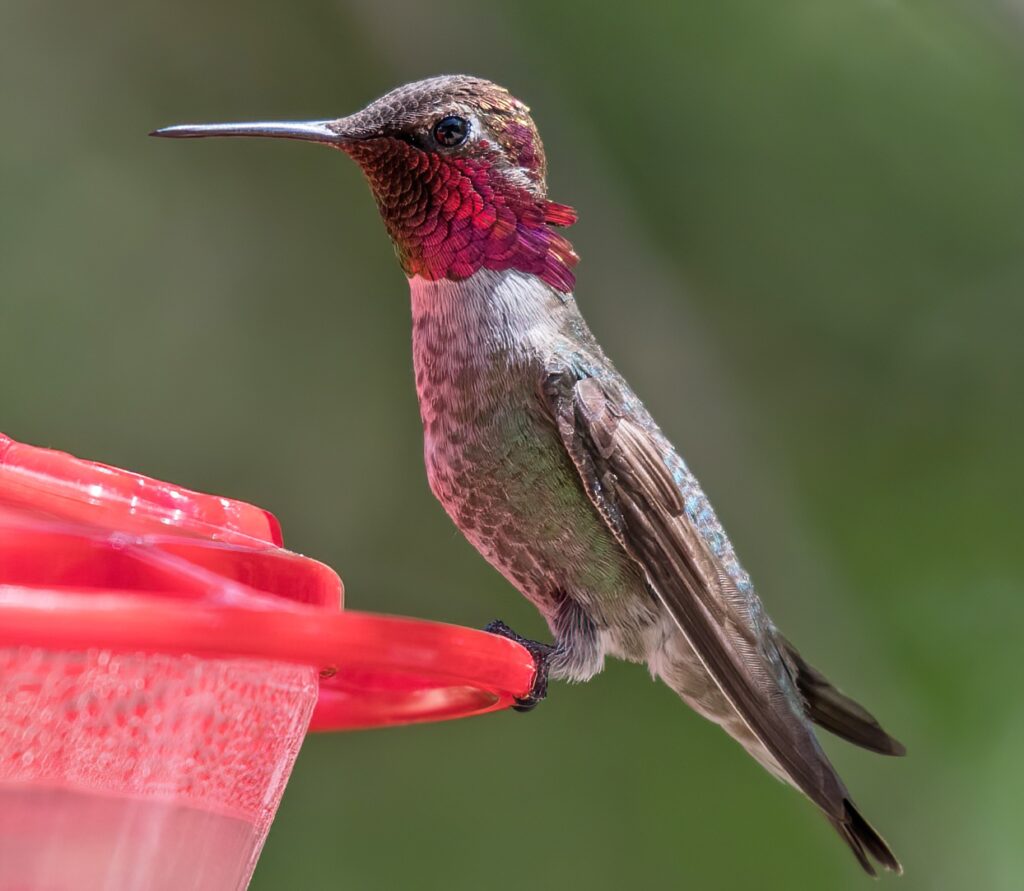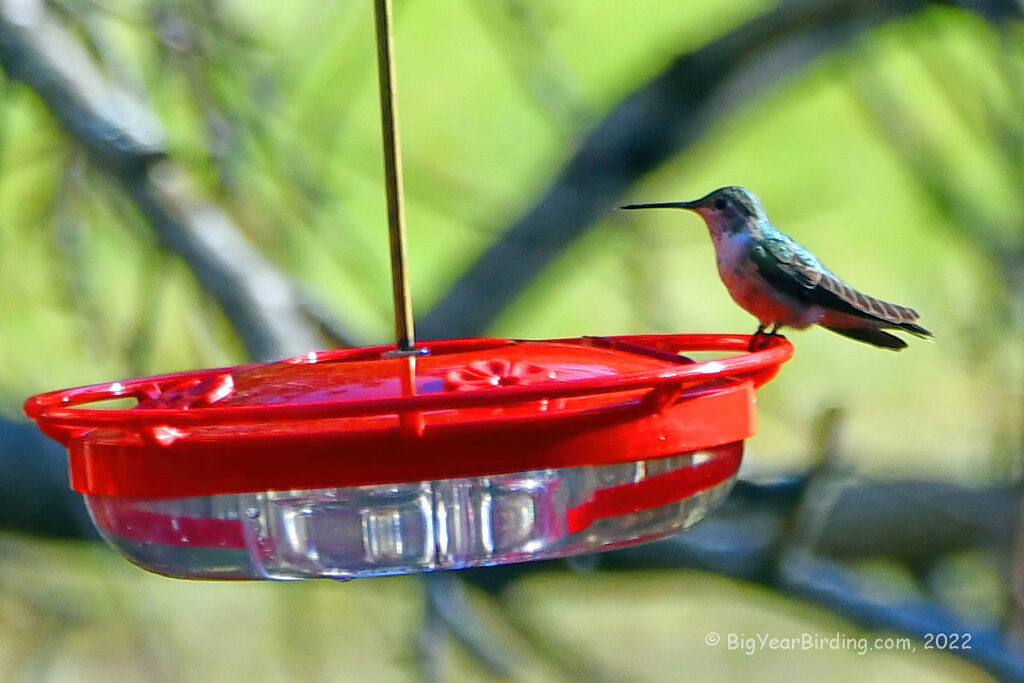
The Broad-tailed Hummingbird (Selasphorus platycercus) is a small bird species found in North America. Adult males have a length of about 4 inches, while females are slightly larger, measuring up to 4.5 inches in length. Their weight ranges from 2.5 to 4 grams, with males weighing slightly less than females. The Broad-tailed Hummingbird has a relatively short bill, which is straight and thin.
The Broad-tailed Hummingbird is easily recognized by its broad, rounded tail feathers, which are a distinguishing field mark. The males have iridescent green feathers on their backs, while their throats and crowns are a vibrant metallic rose-red color. Females have similar markings but with less brilliant colors. They have green upperparts and white underparts with some light spotting on their flanks. Both males and females have white eye-rings.
The Broad-tailed Hummingbird is a migratory species, with breeding ranges that extend from the western United States to Mexico. During the breeding season, these birds can be found in mountainous areas where they feed on nectar from flowers, as well as insects and spiders. In the winter, they migrate to southern Mexico and Central America, where they can be found in forests and gardens.
During the breeding season, male Broad-tailed Hummingbirds will often perform aerial displays to attract females. These displays involve flying in a U-shaped pattern, during which the males produce a high-pitched whistling sound with their wings. Once a male has attracted a female, he will mate with her and then move on to attract another female.
In conclusion, the Broad-tailed Hummingbird is a small but distinctive bird species found in North America. Its broad, rounded tail feathers, metallic rose-red coloration, and white eye-rings make it easy to identify. These birds are migratory, breeding in the western United States and wintering in southern Mexico and Central America. During the breeding season, males perform aerial displays to attract females, and they feed on nectar, insects, and spiders.


